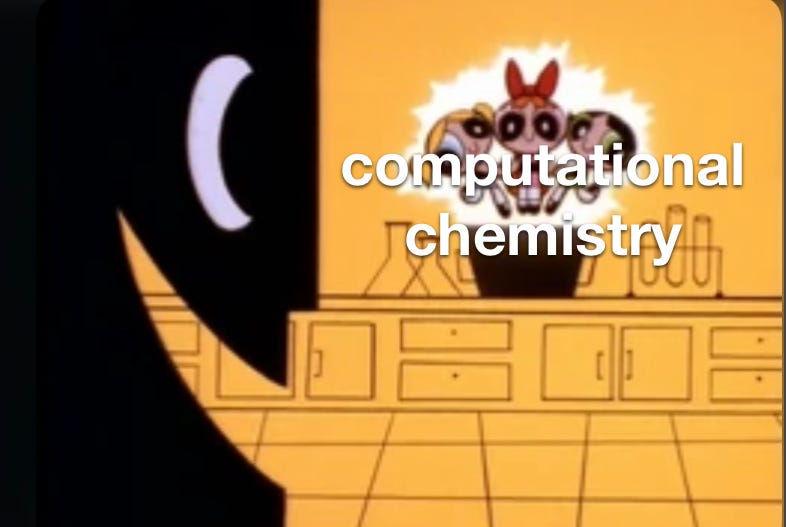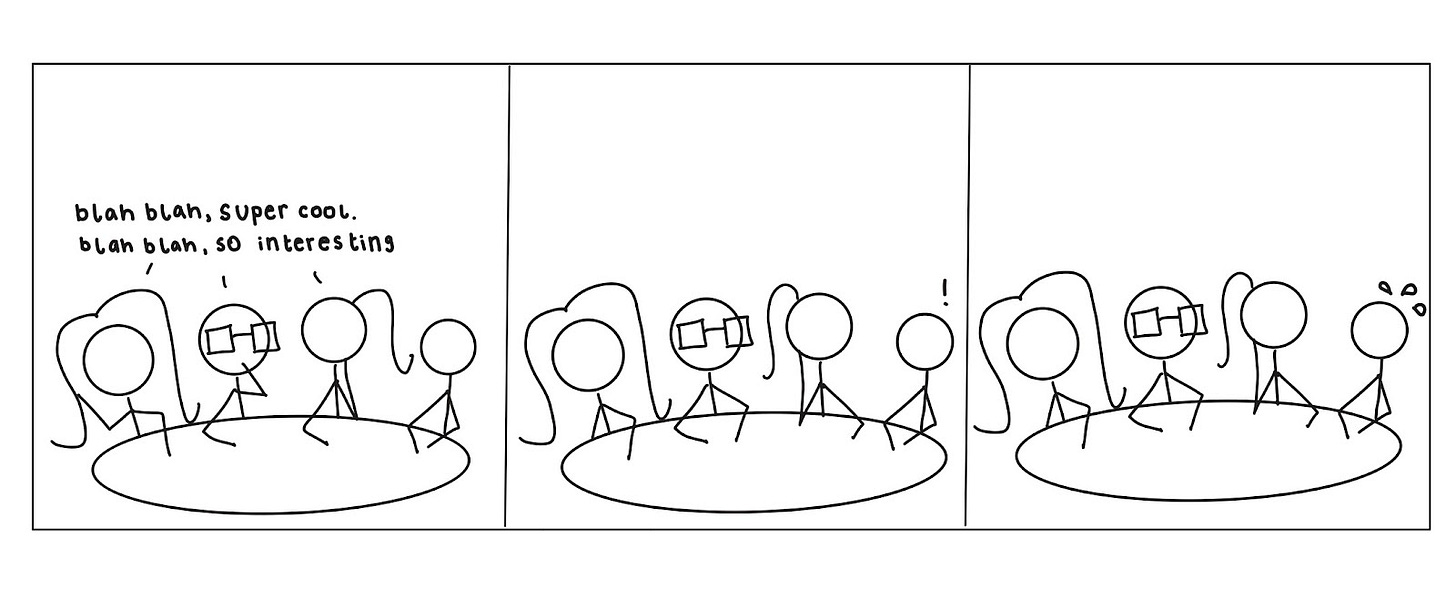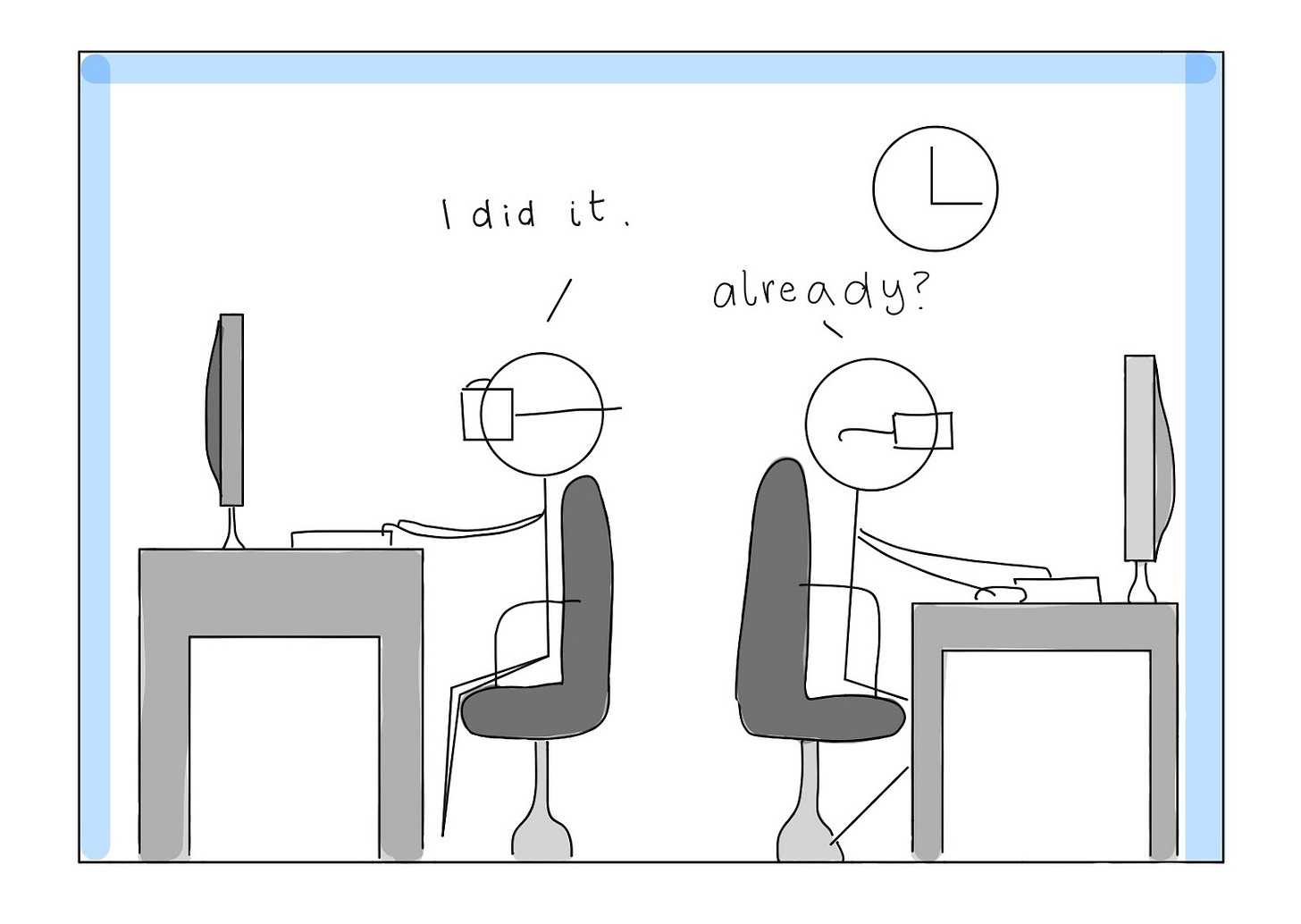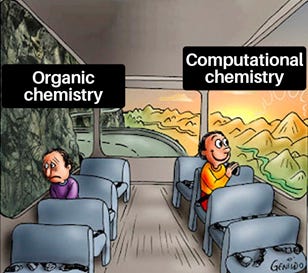Bringing Up Computational Chemistry Will Make You Look Cool at Parties
It will. I swear.
Hi! Welcome to Science with Serena. I’m Serena.
I realize some of you might be new here, so I wanted to formally introduce you to my platform. My mission here is to make quantum science fun and accessible, so whether you came for the laughs or the learning—I hope you’ll stay for both.
Thank you for subscribing and enjoy!
Imagine this: you’re at a party, drink in hand, laughing and chatting with your group of friends who are talking about something really cool and interesting.
Suddenly, the group falls silent and turns to you; you realize it’s your turn to say something cool and interesting.
Gulp.
What should you say?
Never fear—computational chemistry is here. But what is that? Why is it so important?
That’s what everyone will be asking you.
Here’s what you need to know.
The Secret is in the Electrons
Computational chemistry is built on the idea that the biggest questions in chemistry can be answered by understanding them at smallest level. It’s like Matilda from Matilda the Musical said:
Every day starts with the tick of a clock; all escapes start with the click of a lock.
In chemistry, it’s the same. Each significant chemical reaction scientists care about is set into play by one movement of an electron.
The things chemists really want to know about— like if a molecule will work as a drug or if a material will be safe to use—are actually determined by the smallest parts of an atom, it’s electrons.

But tracking chemical reactions back to their electrons is actually harder than it seems because electrons have a strange, dual nature. Thankfully, Erwin Schrödinger and the Schrödinger Equation came along, and scientists were finally able to understand and model electrons correctly.
Once people got a hold of modeling an electron, they wanted to try modeling more electrons, atoms, and possibly even a molecule, but the Schrödinger equation came with a pretty harsh limitation: it could only be solved for one electron exactly.
Computational Bliss
Thus, computational chemistry was born.

If scientists wanted to model multiple electrons or eventually an entire atom, they were going to need a lot more than just pen and paper to do it.
Scientists came up with methods and algorithms to approximate the Schrodinger equation for the system they wanted to model, and then used computers to do the math.
The methods people use to do this are called computational methods, and while there are a few different kinds (you might recognize Density Functional Theory, or Hartree-Fock Theory) they basically all do the same thing for different kinds of systems.
Each method has its benefits and drawbacks, but they both give chemists the ability to solve problems in a way they haven’t been able to before.
In experimental chemistry, scientists have to rely on trial-and-error to understand and model atoms and molecules. They have to spend years in the lab doing experiments to get the answers to the big questions: will this drug cure cancer? Cause it? Will this material be deadly?!
That’s why it takes so long to make new medicines or materials; scientists are playing a big game of guess and check.
Computational chemistry changes all that.
Before even stepping foot into a lab, scientists can predict what will or won’t work based on the behavior of the electrons they found computationally. They can speed up research timelines from twenty years to eighty days by using the aforementioned methods.
Like, In Real Life.
Scientists at Microsoft’s Azure Quantum Elements actually did this.
They wanted to find a new material to make phone batteries with less lithium and they used computational chemistry to do it in less than eighty days.
A high power computer simulated 32 million possible options, a machine-learning model whittled it down to 500,000 and our handy Density Functional Theory came up with a final 150. Only then did scientists head into the lab with 18 possible options and come out with 1 top material that used 70% less lithium.
In eighty days!!
Though it may seem small, the impact this has on the world is huge. Entire industries will be transformed by this increase in speed and efficiency in chemistry.
Think pharmaceuticals, agriculture, materials, medicine, energy-storage, food—anything! If it has chemistry in it, it has the potential to be revolutionized by computational chemistry.
So next time you’re at a party, drink in hand, laughing with your cool and interesting friends who think you’re also cool and interesting —you’ll have computational chemistry to thank.
I’d stick around, but science needs me.
See ya!
Enjoyed this article??? Interested in supporting more fun science content?? Buy me a coffee here!







Love your figures!
Enjoyed reading it!!!